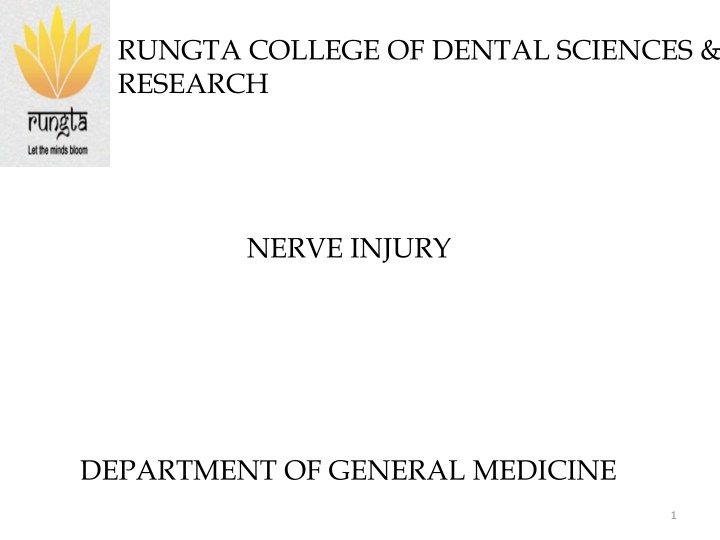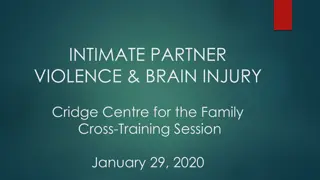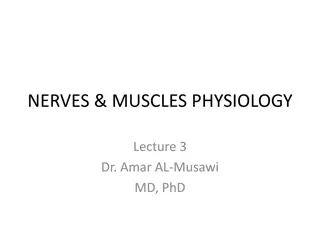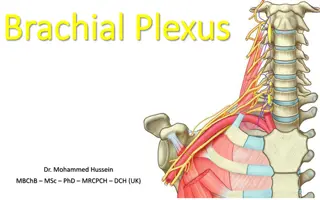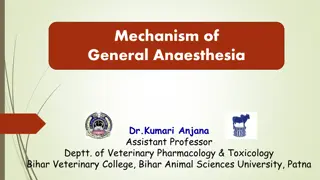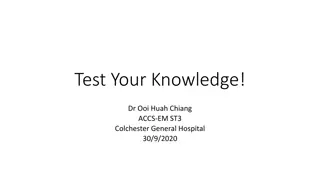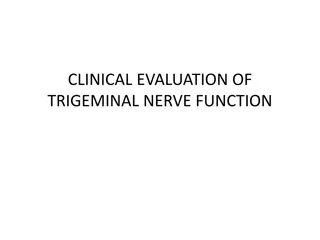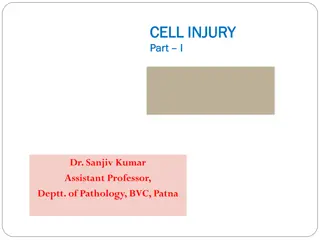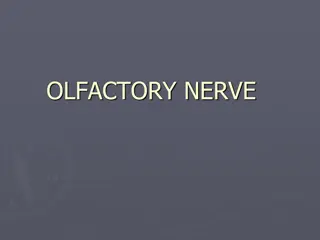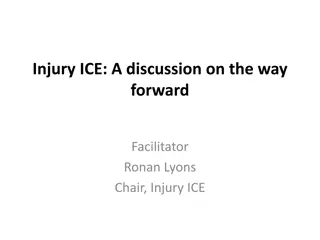Overview of Nerve Injury Management
This presentation covers the anatomy, classification, causes, clinical features, and management of nerve injuries. Learn about nerve structure, Seddan's and Sunderland's classifications of nerve injuries, and more.
Download Presentation

Please find below an Image/Link to download the presentation.
The content on the website is provided AS IS for your information and personal use only. It may not be sold, licensed, or shared on other websites without obtaining consent from the author.If you encounter any issues during the download, it is possible that the publisher has removed the file from their server.
You are allowed to download the files provided on this website for personal or commercial use, subject to the condition that they are used lawfully. All files are the property of their respective owners.
The content on the website is provided AS IS for your information and personal use only. It may not be sold, licensed, or shared on other websites without obtaining consent from the author.
E N D
Presentation Transcript
RUNGTA COLLEGE OF DENTAL SCIENCES & RESEARCH NERVE INJURY DEPARTMENT OF GENERAL MEDICINE 1
Specific learning Objectives At the end of this presentation the learner is expected to know ; Core areas* Domain ** Category # ANATOMY OF NERVE COGNITIVE DESIRED TO KNOW CLASSIFICATION OF NERVE INJURY COGNITIVE DESIRED TO KNOW CAUSES OF NERVE INJURY COGNITIVE DESIRED TO KNOW CLINICAL FEATURES COGNITIVE DESIRED TO KNOW MANAGEMENT OF NERVE INJURY COGNITIVE DESIRED TO KNOW 2
Table of Content ANATOMY OF NERVE CLASSIFICATION OF NERVE INJURY CAUSES OF NERVE INJURY CLINICAL FEATURES MANAGEMENT OF NERVE INJURY 3
NERVE INJURY 1.ANATOMY OF NERVE 2.CLASSIFICATION OF NERVE INJURY 3.CAUSES OF NERVE INJURY 4.CLINICAL FEATURES 5 MANAGEMENT OF NERVE INJURY
ANATOMY OF NERVE * A nerve is an enclosed cable-like bundle 0f AXONS. *Axons are the long ,slender projections of NERVE CELLS. *Endoneurium- A connective tissue wrapping the each axon. *Perineurium - A connective tissue wrapping a group of axons(fascicles). *Epineurium A connective tissue wrapping all the bundles of fascicles.
CLASSIFICATION OF NERVE INJURY Seddan s classification 1.Neuropraxia- There is temporary paralysis of nerve conduction with full recovery. This may be due to over streching or compression of the nerve.No injury to axon or endoneurium. 2.Axonotmesis- It is a division of nerve fibres or axons with intact nerve sheath.Patient may present with sensory loss,paralysis of muscles or causalgia. 3. Neurotmesis- Here complete division of nerve fibres with sheath occurs.Degeration occurs proximally up to first node of Ranvier.Recovery is incomplete even after nerve suturing.There is complete loss of motor and sensory functions with loss of reflexes.Cut end of nerve forms neuroma proximally and glioma distally.
Sunderlands classification of nerve injury 1.Temporary conduction block. 2.Axonotmesis but endoneurium intact. 3.Axonotmesis with disruption of endoneur- -ium but perineurium is intact . 4.Axonotmesis with disruption of endo & per- -ineurium but the epineurium is intact. 5.Neurotmesis with disruption of endo,peri & epineurium.
Clinical features Loss of -Sensory -Motor -Autonomous & -Reflex function depending upon the nerve involved Secondary changes in skin & joint will also appear.
Causes of peripheral nerve lesions 1.Traumatic: Either closed or open 2.Inflammatory: Leprosy, Herpes zoster,diptheria 3.Compression neuropathies 4.Lead,Arsenical poisoning 5.Diabetes mallitus,Alcoholism. 6.Vit.B1 deficiency 7.Porphyria 8.Neural tumours
NEUROPRAXIA There is physiological paralysis of conduction in the intact nerve fibres as a result of streching or distortion without any organic rupture.Hence, Wallerian degeneration does not occur. Recovery takes place within few days to few weeks without residual neurological sign. Treatment-Splinting the limb in a position of relaxation of paralyzed muscle groups.
AXONOTMESIS There is rupture of nerve fibres within the intact nerve sheath. There is always neurological deficit. *anaesthesia *paraesthesia *weakness of muscles and *paralysis of muscles. Treatment- 1.Splinting of the limb. 2.Care of skin. 3.Maintain nutrition of limb. 4.If, regeneration is delayed,then exploration of nerve and excision of scar or callus or neuroma. Progress of regeneration is assessed by 1.Tinel s sign-Tingling sensation at site of regeneration. 2.Recovery of muscle tone and power time to time.
NEUROTMESIS It is due to partial or complete division of nerve Sheath and nerve fibres.It is commonly caused due to penetrating or cut injuries or even during surgery. Partial lesions produces lateral neuroma and complete lesions causes neuroma at the end of nerve. Symptoms-Loss of motor and sensory functions of the affected nerve with dysesthesias. Neurotmesis occur in peripheral nervous system that to common occur in upper linb 73%.
Treatment- 1.Suturing of the nerve provided- a) No infection b) No contamination of wound c) No tension between two cut ends d) Even with repair,recovery is not 100% 2.Principles of nerve repair- Accurate coaption of the nerve ends without tension in healthy bed. 3.Procedure- Define cut ends.Ragged edges are trimmed. Mobilisation of nerve.Sutures are placed in epineural tissue using fine sutures e.g.8-0 etc If gap is there,then perform nerve grafting.
FACIAL NERVE INJURY Introduction- The facial nerve is the seventh cranial nerve, or simply cranial nerve VII. It emerges from the pons of the brainstem, controls the muscles of facial expression, and functions in the conveyance of taste sensations from the anterior two-thirds of the tongue.[1]The nerves typically travels from the pons through the facial canal in the temporal bone and exits the skull at the stylomastoid foramen. The facial nerve also supplies preganglionic parasympathetic fibers to several head and neck ganglia.
Extracranial branches- Distal to stylomastoid foramen, the following nerves branch off the facial nerve: Posterior auricular nerve controls movements of some of the scalp muscles around the ear Branch to Posterior belly of Digastric muscle as well as the Stylohyoid muscle Five major facial branches (in parotid gland) from top to bottom: Temporal branch Zygomatic branch Buccal branch Marginal mandibular branch Cervical branch Intra operatively the facial nerve can be recognized at the tip of tragal cartilage where the nerve is 1cm deep and inferior.
Facial nerve disorders can be caused by infection, injury or other conditions. Symptoms Facial nerve disorders can cause weakness on one or both sides of your face. You might lose your facial expressions, and find it difficult to eat, drink and speak clearly. It can also become difficult to close your eye and blink, which can lead to damage to your cornea. Causes- 1.Infection(Bell s palsy,Ramsay-hunt syndrome,Lyme disease) 2.Trauma 3.Iatrogenic 4.Tumours at base of skull 5.neurological conditions(Gullain-Barre syn,Strokes)
MANAGEMENT MANAGEMENT- 1. Associated injuries like fracture,vessel injury, and other injuries in other system should be looked for. 2.Checking sensation/muscle power and other neurological examination 3.Investigation related to associated injury. 4.Exploration of the wound ,debridement and repair of the nerve. 5.Repair of nerve-for example -facial nerve repair is described in next slide.
1.Early- a) Immediate nerve repair b) Interpositional nerve graft using sural or gr.auricular nerve. 2.late- Cranial nerve crossing by suturing peripheral branches of facial nerve to either hypoglossal or spinal accesory or phrenic nerve. 3.Long standing cases-Surgery to achieve to movement. a) Static procedures-Suspension of lips, cheek and angle of mouth to zygomatic bone.medial canthoplasty , lateral tarsorrhaphy etc. to prevent exposer keratitis. b)Dynamic procedure-Muscle transfer,cross nerve transfer.
* Conditions required for a successful nerve repair - No tension between two ends for this relaxing incision may be required - shorting of bone may be required. - no infection, - no scarring on site. ***************************************
TRIGEMINAL NEURALGIA Introduction -Trigeminal neuralgia (TN or TGN) is a chronic pain disorder that affects the trigeminal nerve. Two main types:- typical and atypical trigeminal neuralgia. The typical form-results in episodes of severe, sudden, shock- like pain in one side of the face that lasts for seconds to a few mts. The atypical form results in a constant burning pain that is less severe.Episodes may be triggered by any touch to the face.Both forms may occur in the same person It is one of the most painful conditions and can result in depression.
ETIOLOGY- The exact cause is unclear but believed to involve loss of the myelin around the trigeminal nerve. This may occur due to compression from a blood vessel as the nerve exits the brain stem, multiple sclerosis, stroke, or trauma. Less common causes include a tumor or arteriovenous malformation. It is a type of nerve pain. The trigeminal nerve is a paired cranial nerve that has three major branches: the ophthalmic nerve (V1), the maxillary nerve (V2), and the mandibular nerve (V3). One, two, or all three branches of the nerve may be affected. Trigeminal neuralgia most commonly involves the middle branch (the maxillary nerve or V2) and lower branch (mandibular nerve or V3) . Diagnosis is typically based on the symptoms after ruling out other possible causes such as post herpetic neuralgiathe trigeminal nerve.
TREATMENT Medical- The anticonvulsant carbamazepine is the first line treatment; second line medications include baclofen, lamotrigine, oxcarbazepine, phenytoin, gabape ntin and pregabalin. Antidepressant medications, such as amitriptyline have shown good efficacy in treating trigeminal neuralgia, especially if combined with an anti-convulsant drug such as pregabalin. There is some evidence that duloxetine can also be used in some cases of neuropathic pain, especially in patients with major depressive disorder,as it is an antidepressant. However, it should, by no means, be considered a first line therapy and should only be tried by specialist advice.
Surgical- The evidence for surgical therapy is poor. Surgery is normally recommended only after medication has proved ineffective, or if side effects of medication are intolerable. While there may be pain relief after surgery, there is also a considerable risk of side effects, such as facial numbness after the procedure. Microvascular decompression appears to result in the longest pain relief. ****
REFERENCES SRBS BOOK OF GENERAL SURGERY A MANUAL ON CLINICAL SURGERY - S DAS MANIPAL MANUAL OF SURGERY - K RAJGOPAL SHENOY BAILEY AND LOVES SHORT PRACTICE OF SURGERY 32
